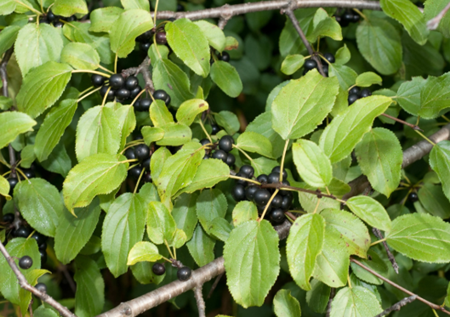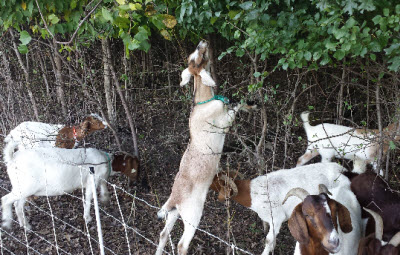Click below to listen to my 2 min. Garden Bite radio show: Battle over Buckthorn continues
Audio PlayerAs we creep toward Halloween in the year 2020! a plant that sends shivers down the spine of most folks is Buckthorn. The bane of the botanical minded, buckthorn takes over forests and parks and invades our landscapes. Common, or European, buckthorn, and glossy buckthorn are the two non-native, invasive buckthorn species found in Minnesota, Wisconsin and throughout the U.S.

It was brought here from Europe in the mid 1800’s and planted as hedges. In Europe they were not invasive but soon after being planted here, they were found to be extremely invasive. The birds ate the seeds and deposited them in native areas where Buckthorn has all but taken out many of our native species. Buckthorn leaves and roots emit a substance that’s poisonous to other plants. Their seeds are also not very nutritious to our songbirds as they are eliminated nearly as quickly as they’re eaten. Some information suggests that this may not be entirely true. What is most certainly true is that they disperse those seeds in the berries in their poop.

Buckthorn shrubs hold their green leaves later into Fall and are easily identifiable that’s why now is a good time to take ‘em out! The Minnesota DNR has more on identification and more.

So how do we get rid of buckthorn? Goats are good! At least quite helpful and cute too.

However, if that’s not your bag, then target your buckthorn plants that have produced fruit, which ripens through September, generally speaking. Remove these fruit-bearing trees first and that will reduce the amount of seeds added to your soil each year. Here’s more on this from the MN DNR. And more from Wiscontext.
Buckthorn seeds in the soil can continue to germinate for many years, so removal is a multi-year commitment! The root system of 2 year old and older plants must be completely removed or it will resprout for years to come. The seedlings to one year old are much easier to pull out. Many cities have opted to use goats!

